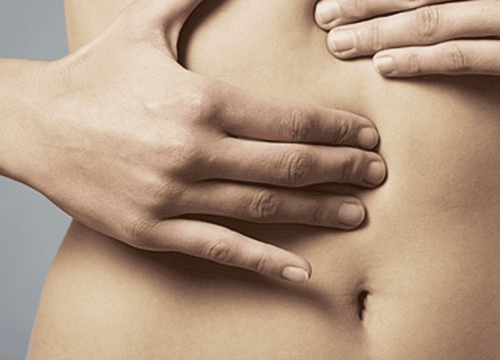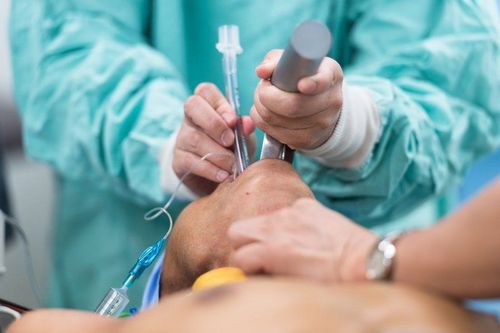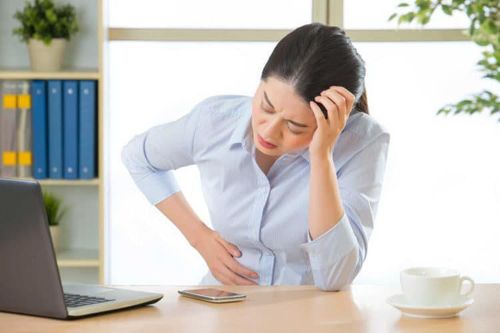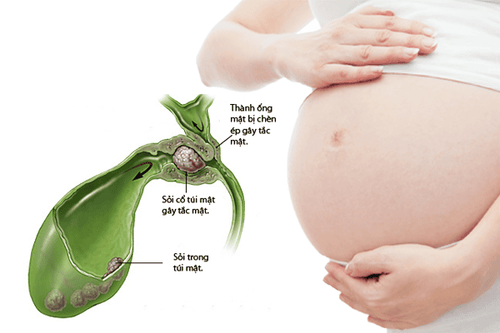This is an automatically translated article.
When the gallbladder is inflamed or there are many stones, it will cause pain for the patient. On clinical examination based on the location of the gallbladder, the doctor determines the gallbladder pain point, thereby helping to diagnose and orient the cause of cholecystitis.
1. Where is the gallbladder located?
Bile is produced by the liver cells and then poured into the bile ducts in the liver, where the bile is used to digest fat cells. If not used up, the bile will return to the gallbladder and be stored there. The bile in the gallbladder is dehydrated to become a more concentrated form.
The gallbladder is a small pear-shaped sac, about 6 to 8 cm long, composed of 3 parts: the base, body and neck of the gallbladder. The location of the gallbladder is on the inferior surface of the right lobe of the liver, close to the right costal margin. The gallbladder is responsible for storing and regulating bile into the digestive tract when needed to help the body digest and absorb fats. When we load fat into the body, the gallbladder will contract to push the bile into the common bile duct into the small intestine. Here bile will help break down fats, support the absorption of fat-soluble vitamins (vitamins A, D, E, K).
2. What is gallbladder pain?
Gallbladder pain is pain that comes from the gallbladder. The most common cause of gallbladder pain is inflammation of the gallbladder.
Cholecystitis occurs due to an infection of the gallbladder. This condition comes on suddenly, called acute cholecystitis, or comes on repeatedly, called chronic cholecystitis. If cholecystitis is not treated promptly, it can lead to dangerous complications, even death.
The main cause of cholecystitis is gallstones. Gallstones block the bile ducts, then over time will cause bacterial superinfection, which leads to acute cholecystitis. In addition to the main cause of stones, cholecystitis can be caused by a few other causes such as trauma, sphincter of oddi, gallbladder cancer ...
Acute cholecystitis usually manifests with the following manifestations in the following order :
First, the patient will feel very pain in the right lower quadrant, pain spreading to the shoulder, back, sometimes epigastric pain. Pain increases when eating, walking, no fixed anti-anxiety posture. Next, after appearing pain for more than 6 hours, the patient will show high fever, chills. When it's hot, when it's cold. After pain and fever, the patient will have jaundice, yellowing of the eyes depending on the condition of cholestasis.

Giải đáp đau túi mật ở đâu?
3. Where is gallbladder pain?
In clinical practice, people divide the abdomen into 9 different regions, corresponding to the areas that will be the internal organs in that area. From the fixed landmarks on the abdomen, we can identify some pain points used in the diagnosis and orientation of some diseases.
In clinical practice, people find gallbladder pain through examination by murphy test. The steps to perform the murphy test are as follows:
First determine the gallbladder point: Method 1: Determine the intersection point between the lateral rectus muscle.
Method 2: Determine the meeting point between the right flank arch and the bisector of the upper right quadrant formed by the white line between the abdomen perpendicular to the line across the navel.
Perform murphy maneuver: Using fingertips 2, 3, 4, slowly press on the gallbladder point identified above, slowly and from shallow to deep. At the same time, the patient takes a deep breath slowly. If the patient can't take a deep breath, but has to stop midway because of pain, it's called positive.
This is a very specific test for cholecystitis. However, in atrophic cholecystitis, a false negative Murphy's test may occur. In case the gallbladder is seen to be raised, combined with obvious symptoms, there is no need to examine this method.
Cholecystitis is a common disease that causes gallbladder pain. The disease is common in people with high risk factors such as a history of gallstones, overweight and obesity ... and is at risk of many dangerous complications. Therefore, if gallbladder pain occurs or is suspected, it should be examined for timely detection and treatment.
Please dial HOTLINE for more information or register for an appointment HERE. Download MyVinmec app to make appointments faster and to manage your bookings easily.













